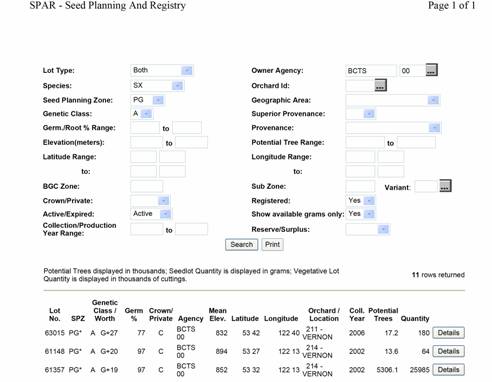Seed planning checklist
On this page
These are 3 necessary steps when planning seed.
1. Determine your needs
- What is the regeneration obligation for which you are planning seed: harvest areas only, or harvest plus natural disturbance. What is an appropriate time frame? It is recommended that you retain a 3-year seed supply for your operating areas. Three years is optimal for A-Class seed when you have a seed supply agreement with the orchard.
- What areas (forest development units) within which harvesting and planting operations will be carried out for the duration of your planning time frame?
- Which biogeoclimatic zones (BEC) do your forest development units fall within?
- To find out, use the SeedMap application.
- How many seeds do you need to plant? Calculate the probable net area (ha) to reforest by planting.
- What is the desired species mix for planting? Calculate total estimated seedling needs (density of tree planting per hectare x hectares for each species).
- Review recent seed use for your operating areas and compare to estimated future seedling needs. Confirm that anomalies are rationalized or adjust estimates for future needs.
2. Determine the seed supply
- What is the existing seed inventory of select and natural stand seedlots?
- Use the SPAR application "Lot Search" function or "Seedlot Reports" to determine existing inventories by seed class (select or natural stand seed).
Note: You will need either a BCeID or an IDIR (government) account to access SPAR
An example of a lot search by owner agency.

3. Acquire required seed supply
- You may be able to meet short-term seed needs by searching SPAR for available seed. If your organization does not own seed or cannot meet its own seed needs, you can search SPAR inventories by species and BEC variant for surplus seed, and arrange to purchase existing surplus seedlots. If a suitable seedlot is identified but is not available as surplus, the owner may be willing to sell you a portion of the lot.
- What is the potential select seed production from orchards by species and seed planning unit?
- Read more about species plans
- Consult the full list of Forest Genetics Council's tree species plans.
Where seed orchard production provides all the seed needed for a seed planning unit, or is expected to meet the total seed need within a few years, check with the orchard owner(s) to determine availability. It is not advisable to collect large amounts of natural stand seed when orchards are projected to meet needs within the SPU, as the Chief Forester's Standards for Seed Use require the use of select seed with a Genetic Worth of five or more to be used when available.
Large natural stand collections will be redundant if orchard seed that meets the Chief Forester's Standards for Seed Use requirements comes available.
